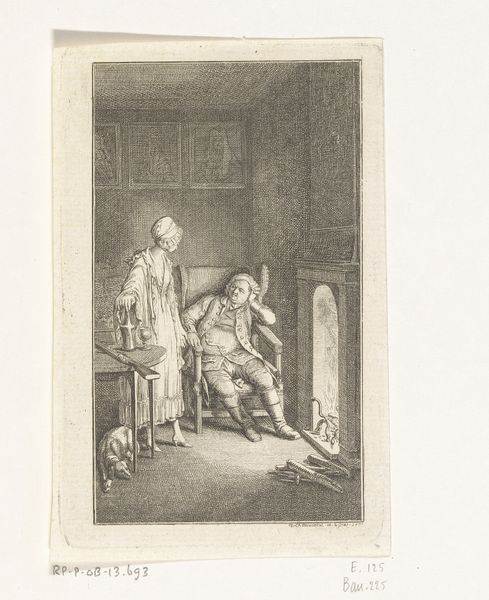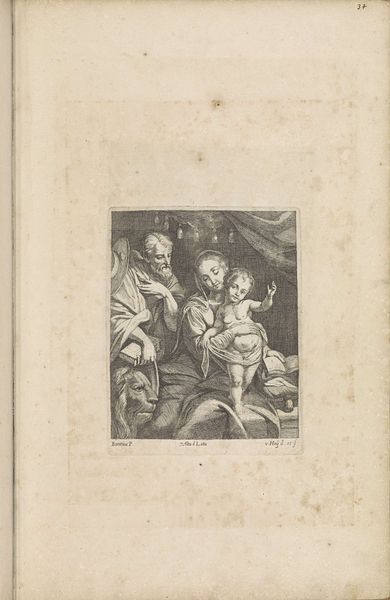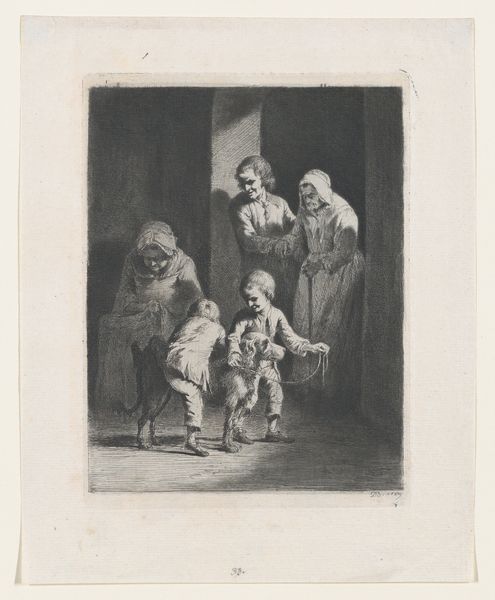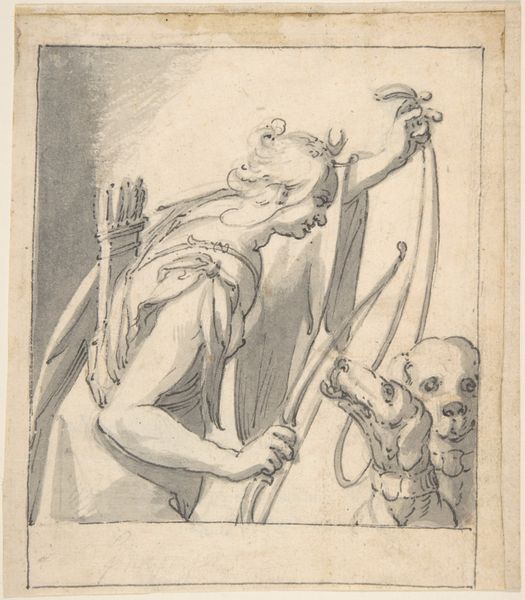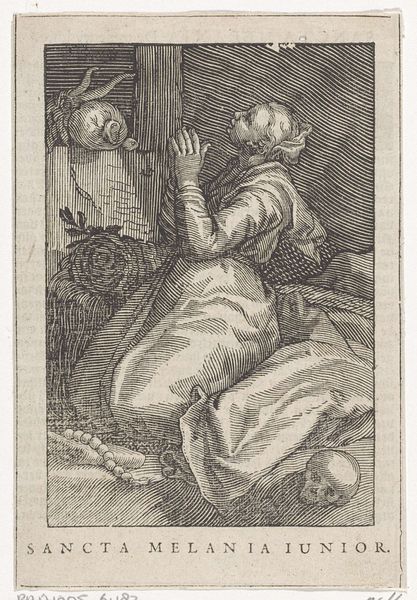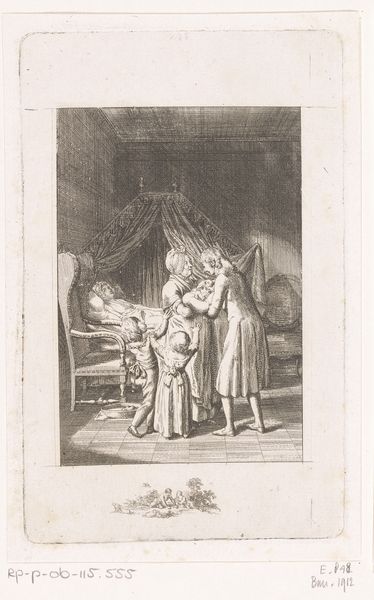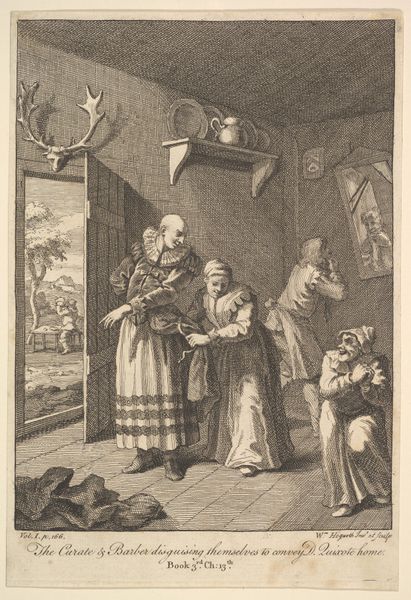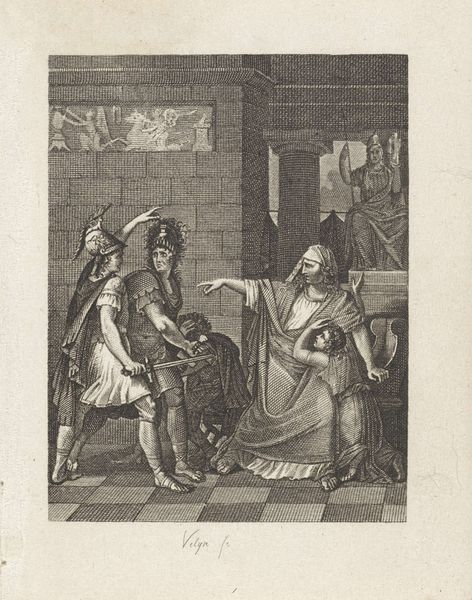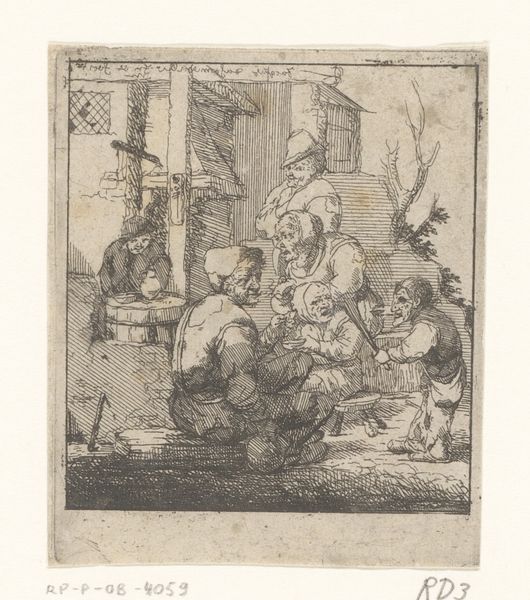
Oude bedelende man met jongen bij een vrouw met kaars in een venster 1739 - 1804
0:00
0:00
drawing, print, etching
#
portrait
#
drawing
#
narrative-art
# print
#
etching
#
figuration
#
genre-painting
Dimensions: height 64 mm, width 35 mm
Copyright: Rijks Museum: Open Domain
Curator: This etching by Johann Andreas Benjamin Nothnagel, made sometime between 1739 and 1804, is titled "Old Beggar with Boy at a Woman with Candle in a Window." Editor: My first impression is of quiet desperation. The lighting focuses on the figures in poverty outside the window while obscuring their surroundings. Curator: The social context is important here. This piece speaks to the widening gap between the wealthy and the poor in 18th-century Europe, depicting a genre scene designed to evoke pity, and perhaps even to subtly critique societal inequalities. The presence of the child underscores vulnerability. Editor: I'm intrigued by the etching process itself. The way he uses line and shadow created by this printmaking process creates so much texture in such a simple composition; consider the coarse cloth of the beggar’s clothing. It highlights the labor involved and how such labor resulted in the social conditions on display in the subject matter. Curator: Exactly. Etchings like this were often produced in multiples, becoming accessible to a broader audience and serving as a form of visual social commentary. The relatively small scale made them easy to circulate and study. Editor: And think about the materiality. Cheap paper, mass-produced. Was this aimed at the middle class, to shame them? It challenges traditional notions of fine art precisely because of that wide distribution and relatively "low" production value in contrast to paintings of the time. It serves as propaganda, too. Curator: It certainly aimed to evoke a response. Nothnagel uses a conventional trope – a stark contrast in light – to heighten the emotional impact and draw attention to the figures' plight. He’s not just depicting poverty; he’s presenting it to an audience capable of enacting change. Editor: Ultimately, I think it brings attention to the fact that prints like these could serve both decorative and agitational purposes, blurring those artificial distinctions between craft and art, activism, and commerce. Curator: I agree. It provides an interesting window into 18th century societal concerns, raising critical questions about the role of art in reflecting and potentially shaping those discussions. Editor: It definitely made me consider how the simple act of making prints can participate in some pretty big issues.
Comments
No comments
Be the first to comment and join the conversation on the ultimate creative platform.
